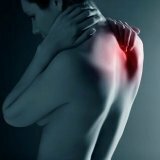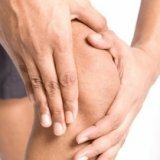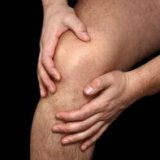Osteomalacia
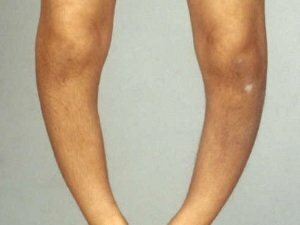
Description
Osteomalacia is a pathological process, accompanied by a decrease in the strength of the skeleton. This is caused by a weak mineralization of the skeleton due to a deficiency of vitamin D in the body, calcium salts and phosphoric acid. The amount of bone substance increases, but its mineralization decreases.
The disease is manifested by pain in the skeleton, muscle hypotrophy, violation of posture and gait.
Develops in children, adolescents and the elderly. It rarely happens during pregnancy. Women are more likely to suffer from the disease than men.
Children bite the bones of the legs and hands, in the elderly - the spine, in pregnant women - the bones of the pelvic region.
Forms of osteomalacia
There are 4 forms of pathology:
- Children( adolescent).
- Puerperal( postpartum).
- Menopause.
- Starch.
In all forms of pathology, the leading symptom is pain in the back and hips. More rarely - in the chest and shoulder.
Causes of
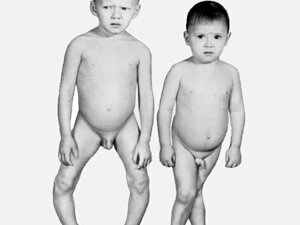 For the normal mineralization of the skeleton, the presence of phosphorus and calcium of a certain level is necessary. With a shortage of these elements, pathology begins to develop.
For the normal mineralization of the skeleton, the presence of phosphorus and calcium of a certain level is necessary. With a shortage of these elements, pathology begins to develop.
The reduction in the required volume of elements occurs for 3 reasons:
- Disruption of absorption in the intestinal tract.
- Imbalance between deposition in calcium bones and excretion of it upon fracture.
- Kidney excretion activity of these elements.
Depending on the causes that caused osteomalacia, the disease is divided into forms:
- Phosphoropenic.
- Calcipenic.
Phosphoropenic form is caused by:
- low in phosphorus in food;
- increased thyroid function;
- kidney pathology( very quickly excreted by the kidneys).
Calcipenic form is caused by:
- a violation of vitamin D synthesis;
- by a vegetarian diet;
- prolonged absence of sunlight;
- is an intestinal disease.
Symptoms of
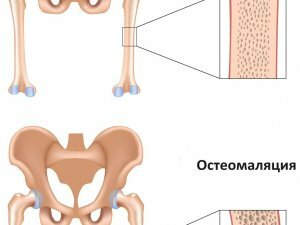 Osteomalacia is manifested as manifest and asymptomatic from the manifestation of percolation.
Osteomalacia is manifested as manifest and asymptomatic from the manifestation of percolation.
The leading clinical symptoms of manifest osteomalacia are:
- bone pain;
- fractures;
- deformation of the bones of the skeleton;
- muscle wasting.
Even with weak physical activity, the bones break or deform. The launched disease will necessarily lead to the fact that even a weak load( walking) can provoke a fracture.
A sick person has a "duck walk", i.e. Swinging when moving.
There is softening of pelvic bones, bones of the lumbar spine, upper part of the femurs and their considerable deformation during pregnancy.
Diagnostics of
The main diagnostic criteria on which experts base their diagnosis are:
- general bone pain;
- white skin color;
- weakness of muscles located close to the torso;
- content( low) in the blood plasma of calcium.
In the early stages of development of pathology differentiate( distinguish) osteomalacia and osteoporosis. A biopsy is performed. Take a fragment of bone tissue from the pelvic region.
The level of mineral content in bones and without biopsy is determined. Conduct gamma-photon absorptiometry.
Radiographic examination reveals structural changes in bones( deformation, decreased density, expansion of the medullary cavity in tubular bones).
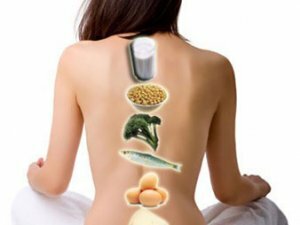 The volume of phosphorus and calcium is determined in the blood and urine. The level of alkaline phosphatase is established.
The volume of phosphorus and calcium is determined in the blood and urine. The level of alkaline phosphatase is established.
Treatment of
Treatment of pathology has the following objectives:
- Elimination of hypovitaminosis D. Vitamin D is prescribed. It is not recommended to use creams that protect against UV rays.
- Elimination of hypocalcaemia. Assign calcium preparations, a diet high in calcium products.
- Elimination of phosphatomy. A diet with a high content in phosphorus products and phosphorus preparations is shown.
Therapeutic gymnastics, ultraviolet irradiation and therapeutic massage are prescribed. With significant deformation of the bones, surgical correction is performed.
In case of a disease that occurred during the period of pregnancy, it is necessary to take microelements and vitamin D. If the treatment is ineffective, the pregnancy is interrupted. After giving birth, it is forbidden to breast-feed a baby with breast milk.
Traumatologists and orthopedists deal with the treatment of the disease. Gynecologists, nephrologists, endocrinologists are invited for consultations.
Folk remedies
To help the body with osteomalacia, it is possible to take phytopreparations:
- Decoction of nettle leaves. Leaves boil and take the broth in a warm form.(2 tablespoons per 0.5 liters of water).Drink at least 3 times during the day.
- Calcareous water. Drink water for 1 tablespoon 3 times a day.
- Daily eat one lemon.
- The shell of one raw chicken egg is thoroughly crushed and eaten. Course - 7 days.
- Well-cooked "sugar" bones( flat) animals eat inside.
- Include seafood, dairy products, meat in the diet.
When choosing a folk remedy, it is necessary to take into account the characteristics of the body and it is advisable to consult a doctor.
Complications of
With the timely beginning of therapy, the prognosis for life is always positive. Due to severe deformity of the spinal column and pelvis, disability is possible. In the absence of proper treatment, patients may die from concomitant diseases. It is necessary to prevent complications from the internal organs.
Prevention of
The main tasks of prevention of osteomalacia are considered to be:
- restriction of physical activity when pain occurs;
- high-grade food with the maintenance of vitamin D, phosphates and salts of a lime;
- Improvement of quality and hygienic living conditions.
- Reception of drugs regulating metabolic processes of phosphates and calcium, mineralization of the skeleton. The doctor prescribes medicines.

